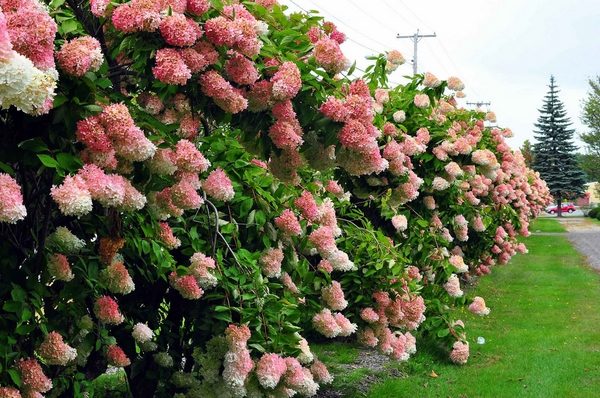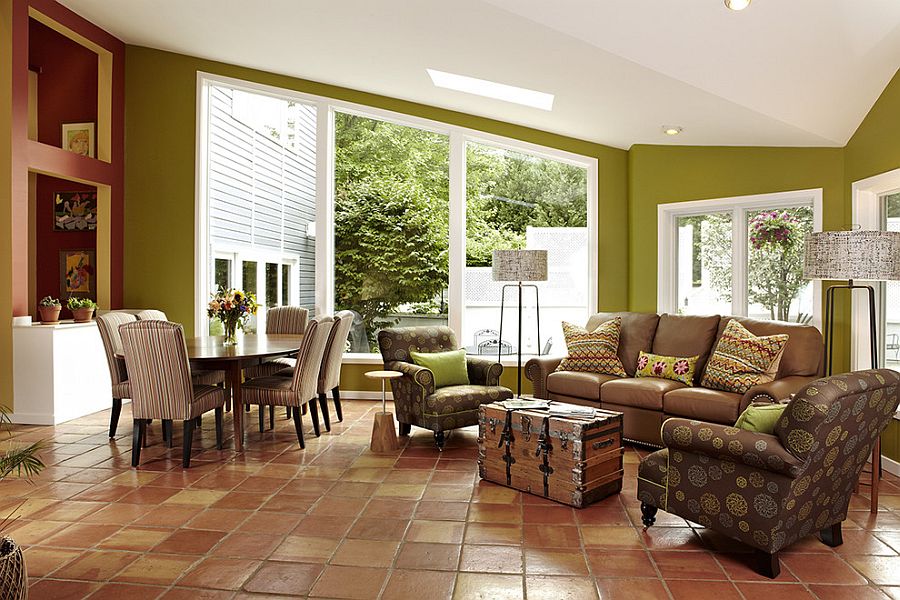What are the fastest growing screening plants? Getty) cherry laurel the plant is originally founded in the southeastern us and is an evergreen shrub.
Best Plants For Screening, You can plant them at the pergola posts, arch or arbor and have a fascinating backyard retreat. Plants have always been used to create shelter, offer privacy or screen out unwanted views, define boundaries and divide the space within.

Suitable plants for screening can include hedging shrubs, trees or grasses and bamboos, depending on the level of formality, and the height and spread required for the space. I’m often asked to recommend a screening plant to give privacy to a home and its landscape. But, they can be particular about the heat. When planting your living screen, do not plant in a straight line.
Stevens holly (to 18 ft.) yaupon holly (to 16 ft.)
The more popular variety emerald green grows 10 to 15 feet tall and 3 to 4 feet wide. Plants have always been used to create shelter, offer privacy or screen out unwanted views, define boundaries and divide the space within. This magnolia is covered in fragrant, large, white flowers in late winter to early spring, followed by vibrant green foliage through the summer. Leyland cypress is a popular privacy fence choice. Deciduous plants will lose their leaves in the winter, but usually produce flowers which will add color to the landscape. When planting your living screen, do not plant in a straight line.

The 12 i would rate as best for big parts of texas would be: You can choose a variety that grows to your exact desired height, and small plants purchased from nurseries can provide screening in as. Most types, prefers well drained. Bamboo makes a great contemporary screen. Stevens holly (to 18 ft.) yaupon holly (to 16 ft.)
 Source: pinterest.co.uk
Source: pinterest.co.uk
Leyland cypress is a popular privacy fence choice. With a longer flowering season than most types of roses, climbing roses can provide your garden with a pretty screening option. The foliage is lacy and attractive, turning red in fall (though the brilliant fall color may be muted in very shady areas.) for height, choose the straight nandina domestica or ‘royal.
 Source: deavita.net
Source: deavita.net
The more popular variety emerald green grows 10 to 15 feet tall and 3 to 4 feet wide. Full sun to part shade. You can plant them at the pergola posts, arch or arbor and have a fascinating backyard retreat. If deer are present, we recommend. This screening plant is a compact grower, so it requires very little pruning.
 Source: instanthedge.com
Source: instanthedge.com
Neighbour disputes such as placing a trampoline right next to the fence, a light shining from. Because this plant grows tall and narrow, it’s perfect for planting in a row to create a screen, as shown by the patio space below. Bamboo can be grown in containers, making it a good choice for screening a patio, roof terrace or balcony..
 Source: bambooplantshq.com
Source: bambooplantshq.com
Once the plants have reached your desired height, snip the tops off. Best screening plants for privacy fastest growing. The best kinds of plants for privacy screens are going to be on the larger end of the size spectrum. Makes a gorgeous, dense screen, that can be clipped to shape. Landscape and former block contestant dale vine shares his top.
 Source: topbambooproducts.com
Source: topbambooproducts.com
Plants have always been used to create shelter, offer privacy or screen out unwanted views, define boundaries and divide the space within. Some mature quickly into dense hedges and others develop with you, over time. Leyland cypress is a popular privacy fence choice. The foliage is lacy and attractive, turning red in fall (though the brilliant fall color may be.
 Source: blessingland.com
Source: blessingland.com
Hedges a useful way of using large shrubs as tree substitutes is to clear the lower branches as they grow so that the space underneath is maximised and plants below receive adequate light. This magnolia is covered in fragrant, large, white flowers in late winter to early spring, followed by vibrant green foliage through the summer. Creates a dense hedge.
 Source: gardenmandy.com
Source: gardenmandy.com
Some mature quickly into dense hedges and others develop with you, over time. Stevens holly (to 18 ft.) yaupon holly (to 16 ft.) This magnolia is covered in fragrant, large, white flowers in late winter to early spring, followed by vibrant green foliage through the summer. You can plant them at the pergola posts, arch or arbor and have a.
 Source: pracbrown.co.uk
Source: pracbrown.co.uk
People plant trees and hedges for all kinds of reasons, some purely aesthetic, some for more practical purposes such as privacy. Bamboo can be grown in containers, making it a good choice for screening a patio, roof terrace or balcony. Some mature quickly into dense hedges and others develop with you, over time. Certain types of clematis (marked group 3.
 Source: hooksandlattice.com
Source: hooksandlattice.com
Plants that make great hedges respond to pruning by becoming more dense. The more popular variety emerald green grows 10 to 15 feet tall and 3 to 4 feet wide. Bamboo makes a great contemporary screen. Suitable plants for screening can include hedging shrubs, trees or grasses and bamboos, depending on the level of formality, and the height and spread.
 Source: deavita.net
Source: deavita.net
Bamboo can be grown in containers, making it a good choice for screening a patio, roof terrace or balcony. Makes a gorgeous, dense screen, that can be clipped to shape. An attractive flowering hedge, the lilly pilly can grow up to five meters in height. Deciduous plants will lose their leaves in the winter, but usually produce flowers which will.
 Source: greenearth-landscapes.com
Source: greenearth-landscapes.com
An attractive flowering hedge, the lilly pilly can grow up to five meters in height. Makes a gorgeous, dense screen, that can be clipped to shape. 2.5m high x 2m wide. Neighbour disputes such as placing a trampoline right next to the fence, a light shining from. Depending on the variety, bottlebrushes can grow up to 10 metres high and.
 Source: best4hedging.co.uk
Source: best4hedging.co.uk
This magnolia is covered in fragrant, large, white flowers in late winter to early spring, followed by vibrant green foliage through the summer. Plants that make great hedges respond to pruning by becoming more dense. Known for their hardiness, bottlebrushes are a popular australian native that can work well as a screening plant. You can plant them at the pergola.
 Source: lakesideplants.com
Source: lakesideplants.com
Because this plant grows tall and narrow, it’s perfect for planting in a row to create a screen, as shown by the patio space below. If deer are present, we recommend. [from exterior worlds] a wall of cypress trees borders a houston patio. This screening plant is a compact grower, so it requires very little pruning. What are the fastest.
 Source: pinterest.com
Source: pinterest.com
With a longer flowering season than most types of roses, climbing roses can provide your garden with a pretty screening option. The foliage is lacy and attractive, turning red in fall (though the brilliant fall color may be muted in very shady areas.) for height, choose the straight nandina domestica or ‘royal princess’, as opposed to the more compact cultivars.
 Source: pinterest.com
Source: pinterest.com
At paramount plants and gardens we specialise in a variety of trees and shrubs which are suitable as screening either to form a neat boundary hedge or a tall evergreen screen above the fence line. The 5 best screening plants for privacy. To form a continuous hedge, space plants about half their mature width. Once the plants have reached your.
 Source: centenarylandscaping.com.au
Source: centenarylandscaping.com.au
Known for their hardiness, bottlebrushes are a popular australian native that can work well as a screening plant. Evergreens make wonderful, quick hedges and privacy screens. Royal star magnolia is a beautiful choice for those looking for a truly stunning and unique privacy screen! Screen, hedge, small feature tree, patio pot plant. Stevens holly (to 18 ft.) yaupon holly (to.
 Source: siteshade.com.au
Source: siteshade.com.au
Eastern redcedar juniper (to 35 ft.) little gem magnolia (to 30 ft.) teddy bear magnolia (to 20 ft.) nellie r. Best screening plants for privacy fastest growing. [from exterior worlds] a wall of cypress trees borders a houston patio. Horsetail grass is one of the most popular ornamental grasses and a good screening plant. The more popular variety emerald green.
 Source: deavita.net
Source: deavita.net
Known for their hardiness, bottlebrushes are a popular australian native that can work well as a screening plant. Neighbour disputes such as placing a trampoline right next to the fence, a light shining from. With a longer flowering season than most types of roses, climbing roses can provide your garden with a pretty screening option. The more popular variety emerald.
 Source: deavita.net
Source: deavita.net
A hedge is most easily made from columnar trees or upright shrubs. Here’s our list of top 10 plants for screening, plus a few tips to get them off to a great start. [from exterior worlds] a wall of cypress trees borders a houston patio. The best kinds of plants for privacy screens are going to be on the larger.
 Source: hortzone.com
Source: hortzone.com
This magnolia is covered in fragrant, large, white flowers in late winter to early spring, followed by vibrant green foliage through the summer. Most types, prefers well drained. Nandina (heavenly bamboo) tolerates a fair amount of shade and if pruned correctly can remain full from top to bottom for screening. Landscape and former block contestant dale vine shares his top.
 Source: homestolove.com.au
Source: homestolove.com.au
Full sun to part shade. Evergreen plants are the most common choice for privacy screens as they do not lose their leaves in the winter. Bigger plants reach heights of eight feet and can spread to about five weed wide. At paramount plants and gardens we specialise in a variety of trees and shrubs which are suitable as screening either.
 Source: pinterest.co.uk
Source: pinterest.co.uk
Clumping bamboo ‘gracilis’ is a reliable fast growing screening bamboo used for limited house and garden spaces. Royal star magnolia is a beautiful choice for those looking for a truly stunning and unique privacy screen! Plants have always been used to create shelter, offer privacy or screen out unwanted views, define boundaries and divide the space within. This magnolia is.
 Source: mcbrayerlandscapes.com
Source: mcbrayerlandscapes.com
The best kinds of plants for privacy screens are going to be on the larger end of the size spectrum. Makes a gorgeous, dense screen, that can be clipped to shape. An attractive flowering hedge, the lilly pilly can grow up to five meters in height. But, they can be particular about the heat. To form a continuous hedge, space.
 Source: thespruce.com
Source: thespruce.com
I’m often asked to recommend a screening plant to give privacy to a home and its landscape. Deciduous plants will lose their leaves in the winter, but usually produce flowers which will add color to the landscape. Because this plant grows tall and narrow, it’s perfect for planting in a row to create a screen, as shown by the patio.








